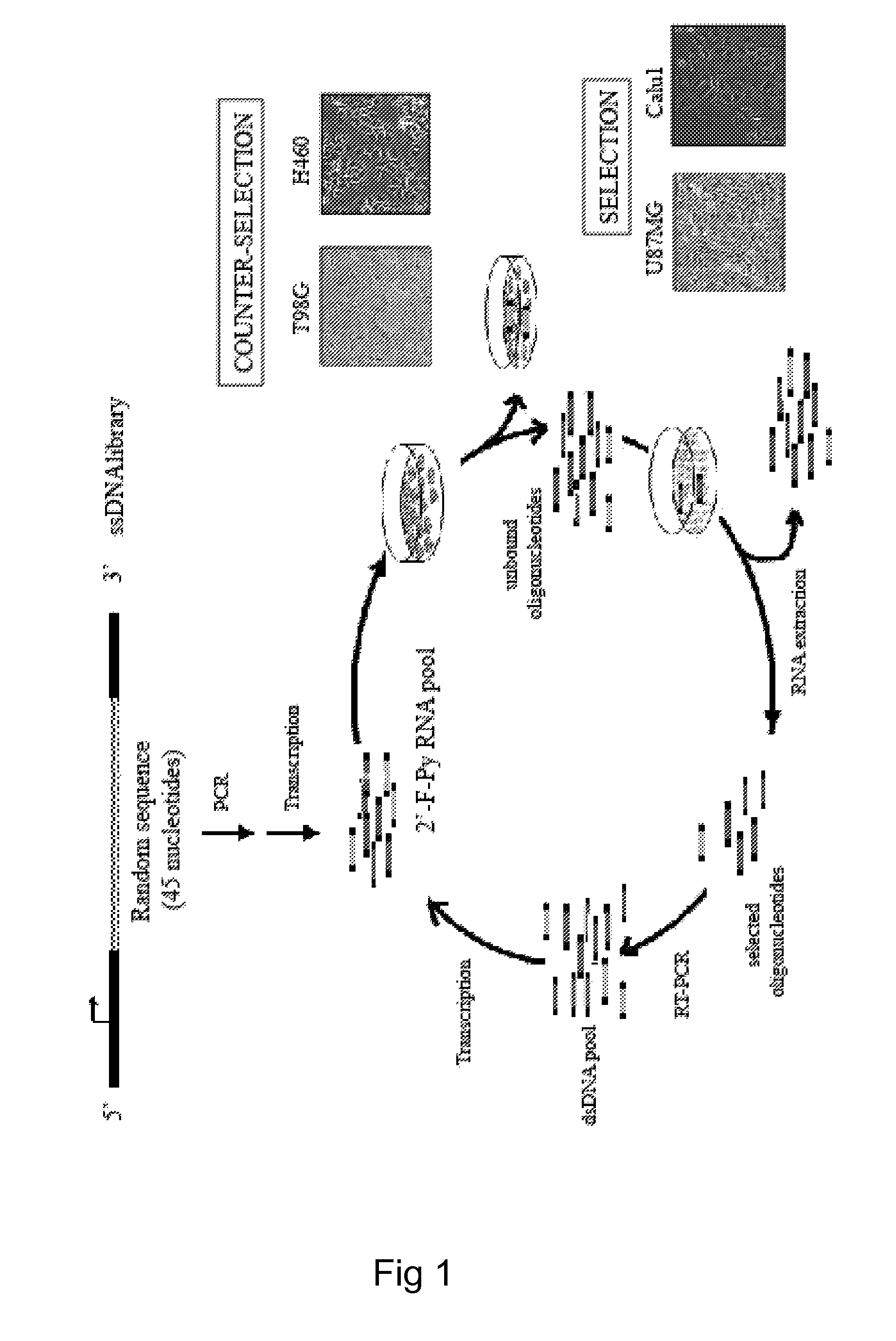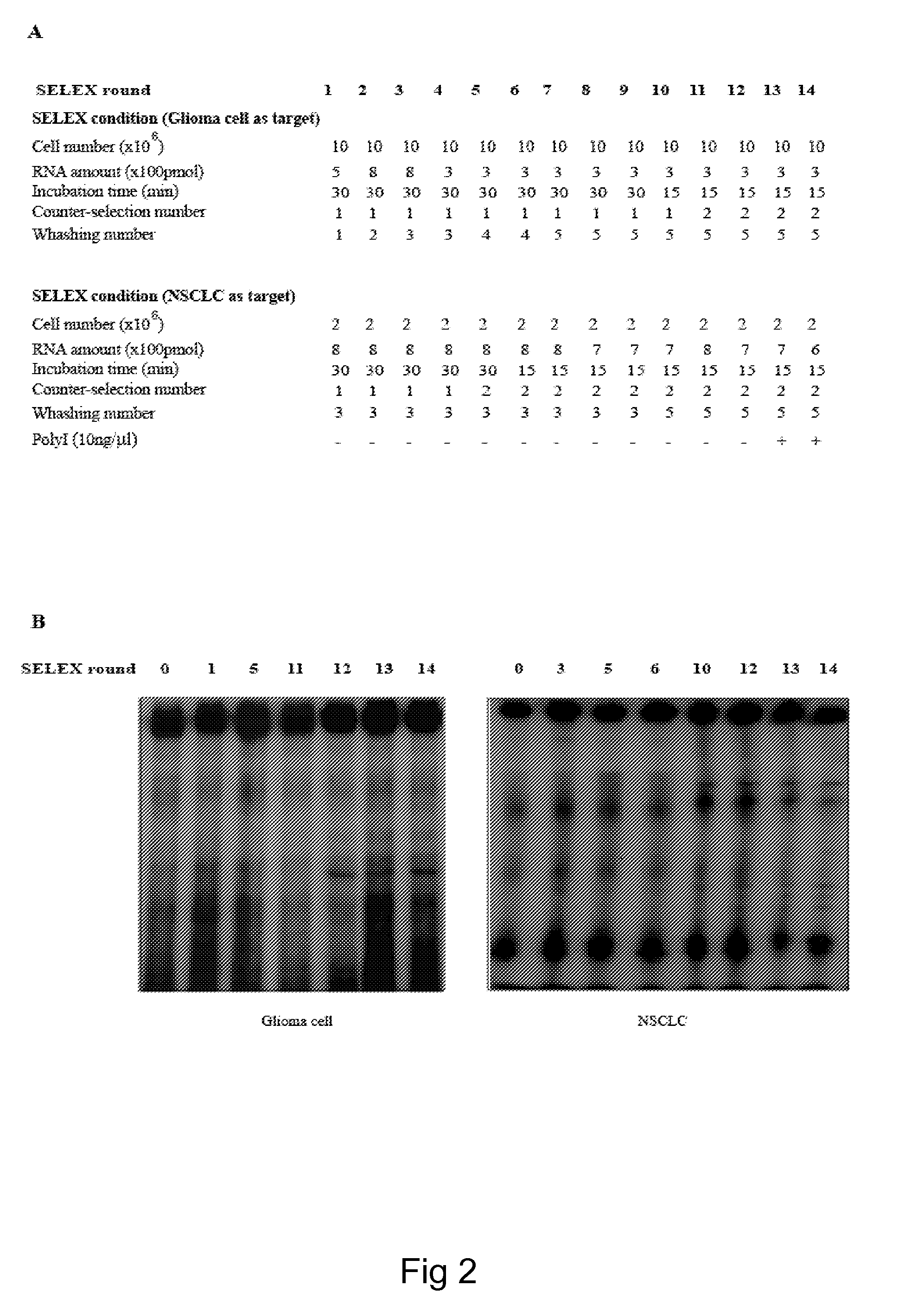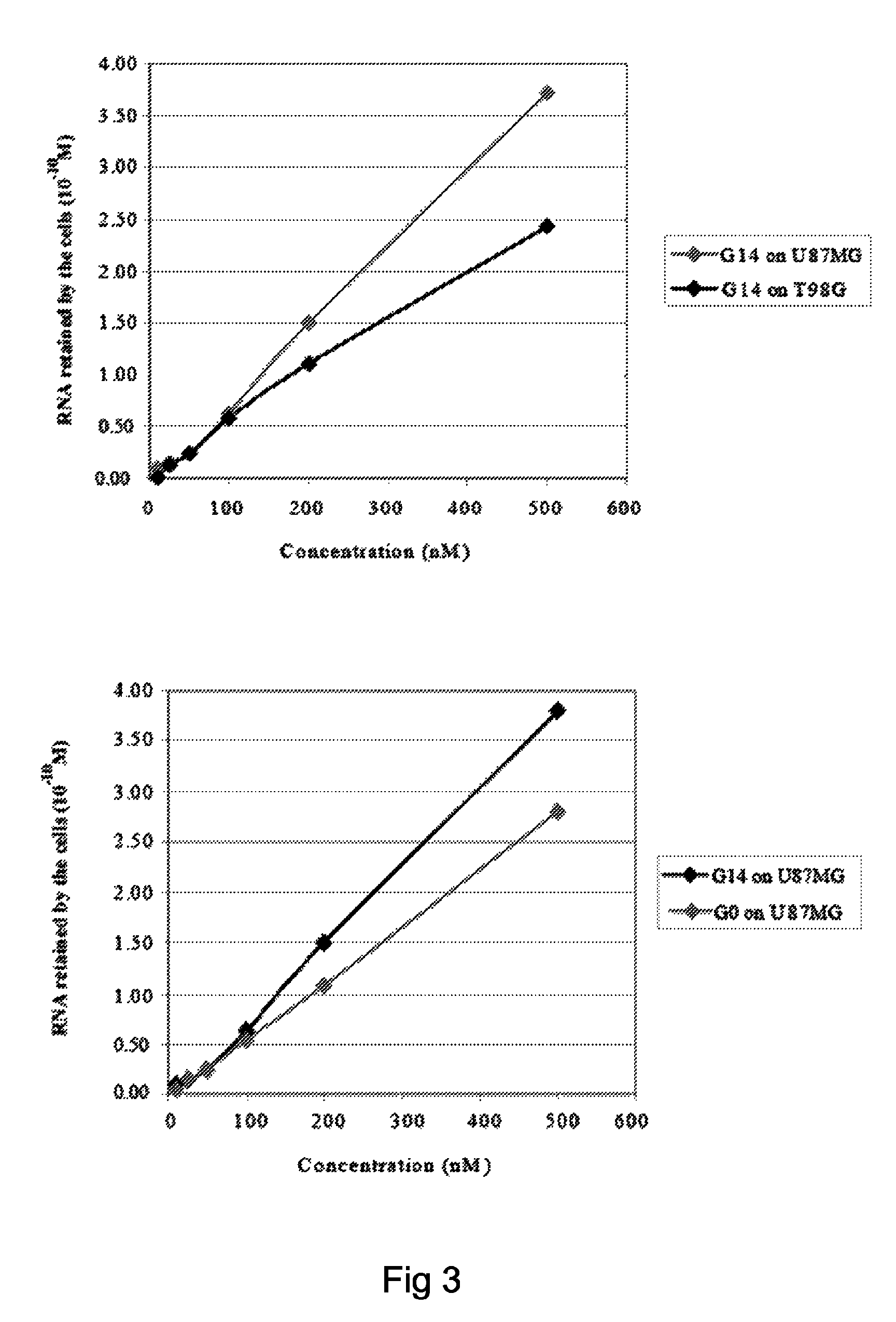Method for obtaining oligonucleotide aptamers and uses thereof
a technology of oligonucleotide aptamers and aptamers, which is applied in the field of obtaining oligonucleotide aptamers, to achieve the effect of increasing the selective pressur
- Summary
- Abstract
- Description
- Claims
- Application Information
AI Technical Summary
Benefits of technology
Problems solved by technology
Method used
Image
Examples
example 1
Whole Cell SELEX Using Glioma Cells: Differential Whole Cell SELEX
Enrichment of Selection for a Complex Target, RFLP, Enrichment of Recovery, Differential Binding on Different Cell Lines
[0065]In order to isolate cell specific ligands for a given tumor cell phenotype, the authors used as a model system, stable human glioma cell lines. Stable cell lines have the advantage that they can be kept under well controlled growth conditions and that they remain stable all along the SELEX procedure. The authors used as target for the selection steps the human malignant glioma cell line, U87MG and for the counterselection steps the T98G. These two cell lines differ for the potential to form tumors in nude mice and for resistance to radiation-induced cell death. U87MG being highly tumorigenic and radio-resistant while the T98G are poorly tumorigenic and sensitive to radiations. On the other hand, these cell lines share the same altered cellular pathways as both harbor p14arf / p16 deletion and PTE...
example 2
Whole-Cell SELEX to Isolate RNA-Aptamers Against Trail-Resistant NSCLC
[0079]To extend the validity of the whole-cell SELEX approach to a different cell system, the authors have also performed the selection on NSCLC cells.
[0080]In order to generate RNA-aptamers able to discriminate between TRAIL-resistant and TRAIL-sensitive cell phenotype, the authors have selected for the SELEX method, two different cell lines of human lung carcinoma among four different NSCLC: A459, Calu1, H460, and A549.
[0081]These NSCLC have been extensively characterized for their resistance to the cytotoxic effects of TRAIL and it has been established that the human lung A459 (epidermoid lung carcinoma) cells (p53 null) are resistant to TRAIL, while the H460 (lung epithelial cell carcinoma) cells (wild type p53) are highly sensitive to TRAIL (Zanca C. et al., 2008).
[0082]Furthermore, these four NSCLC have been characterized for their expression of molecules participating in the apoptotic process and for their ...
example 3
Whole Cell SELEX Using NSCLC Cells: Differential Whole Cell SELEX
Enrichment of Selection for a Complex Target, RFLP, Enrichment of Recovery, Differential Binding on Different Cell Lines
[0085]In order to isolate cell specific ligands for a given tumor cell phenotype, the authors used as a model system, stable human NSCLC cell lines. Stable cell lines have the advantage that they can be kept under well controlled growth conditions and that they remain stable all along the SELEX procedure. The authors used as target for the selection steps the human malignant NSCLC cell line, A459 and for the counterselection steps the H460. These NSCLC have been extensively characterized for their resistance to the cytotoxic effects of TRAIL and it has been established that the human lung A459 (adenocarcinoma) cells (wild type p53) are resistant to TRAIL, while the H460 (lung epithelial cell carcinoma) cells (wild type p53) are highly sensitive to TRAIL (Zanca C. et al., 2008 and authors personal comm...
PUM
| Property | Measurement | Unit |
|---|---|---|
| volume | aaaaa | aaaaa |
| volume | aaaaa | aaaaa |
| volume | aaaaa | aaaaa |
Abstract
Description
Claims
Application Information
 Login to View More
Login to View More - R&D
- Intellectual Property
- Life Sciences
- Materials
- Tech Scout
- Unparalleled Data Quality
- Higher Quality Content
- 60% Fewer Hallucinations
Browse by: Latest US Patents, China's latest patents, Technical Efficacy Thesaurus, Application Domain, Technology Topic, Popular Technical Reports.
© 2025 PatSnap. All rights reserved.Legal|Privacy policy|Modern Slavery Act Transparency Statement|Sitemap|About US| Contact US: help@patsnap.com



